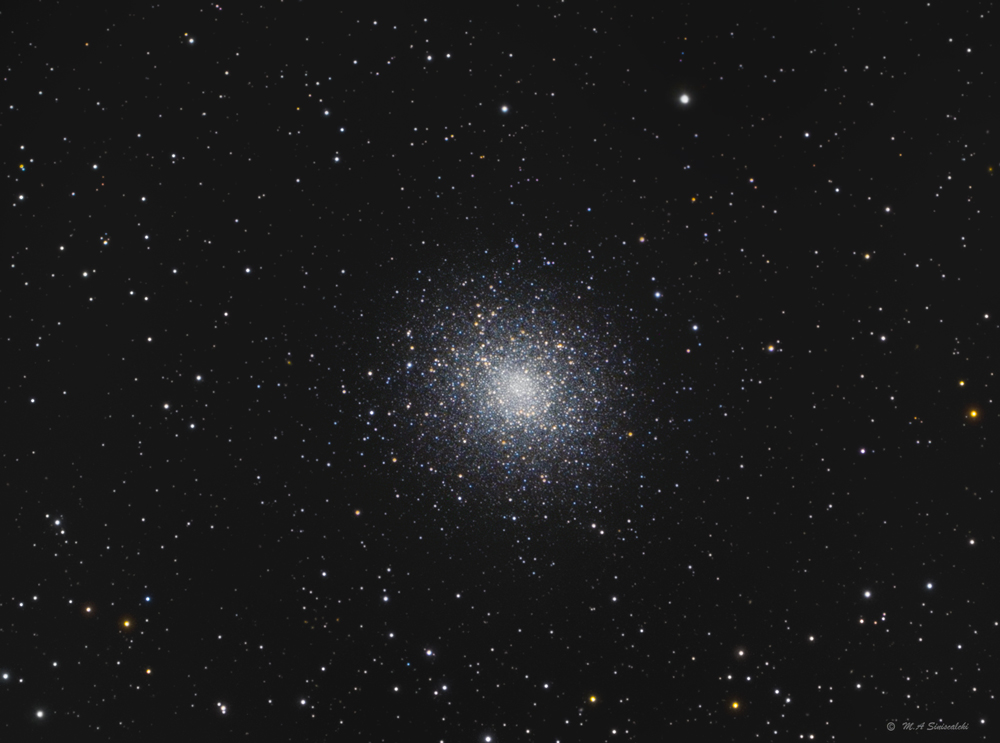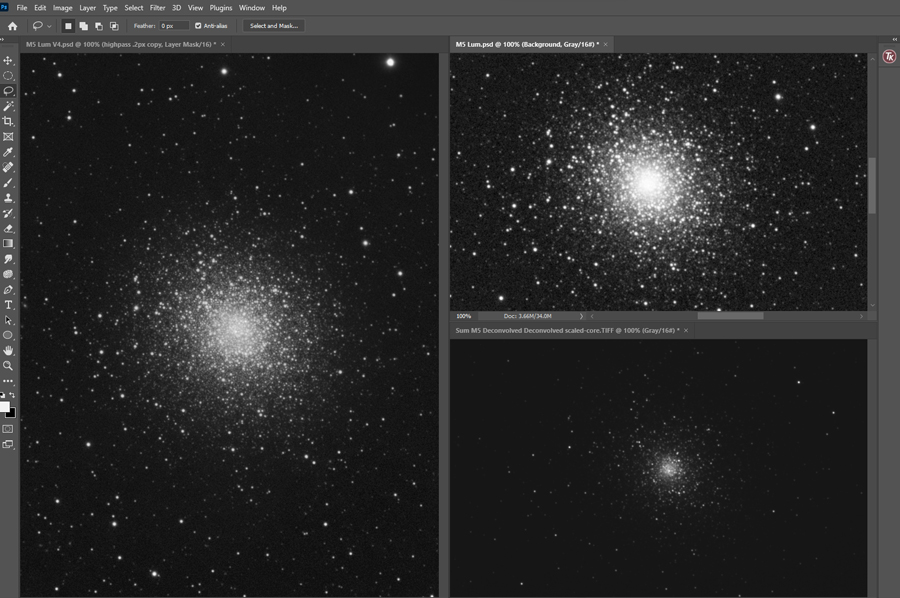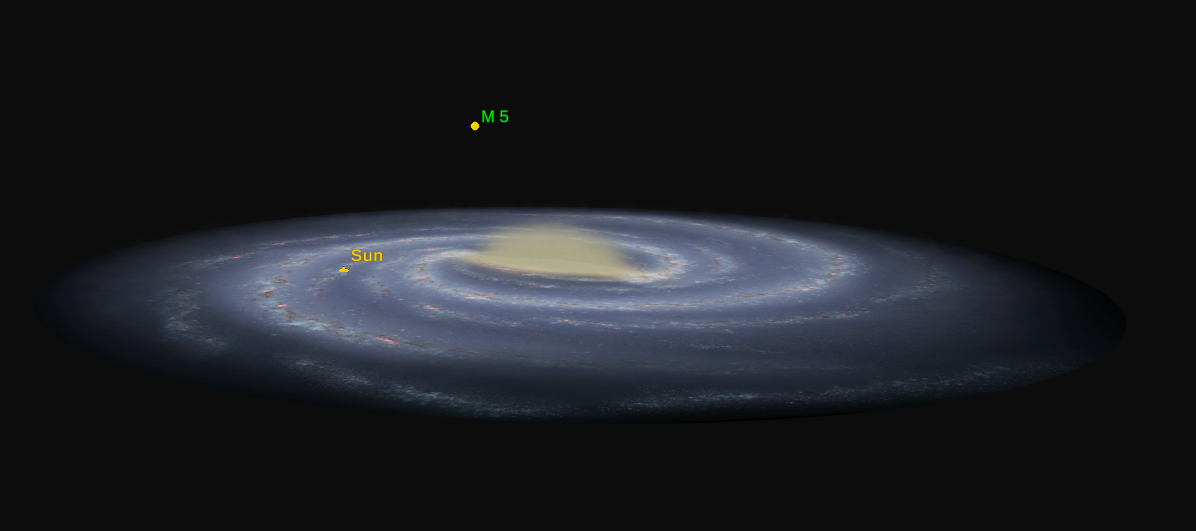© 2022 Michael A. Siniscalchi
Messier 5
Globular Cluster in Serpens
RA:15h 18m 29s Dec: +01° 58' 42" Distance - ~25000 ly Size 23'
Click on image for larger size
From Wikipedia;
M5 was discovered by German astronomer Gottfried Kirch in 1702 when he was observing a comet. Charles Messier noted it in 1764 and—a studier of comets—cast it as one of his nebulae. William Herschel was the first to resolve individual stars in the cluster in 1791, counting roughly 200.
One hundred and five stars in M5 are known to be variable in brightness, 97 of them belonging to the RR Lyrae type. RR Lyrae stars, sometimes referred to as "Cluster Variables", are somewhat similar to Cepheid type variables and as such can be used as a tool to measure distances in outer space since the relation between their luminosities and periods are well known. The brightest and most easily observed variable in M5 varies from magnitude 10.6 to 12.1 in a period of just under 26.5 days.
A dwarf nova has also been observed in this cluster.
Processing Notes -
Due to the wide dynamic range of this globular cluster and the resulting saturated core areas during image stretching, two sets of exposures were necessary.
The 5 minute longer exposure subs (3 minute subs for RGB), to bring out the surrounding fainter details, were combined in Photoshop with a series of 30 second shorter
exposures to produce a composite layer where the core is not saturated in both Luminance and color.
The below screen shot is the Luminance channel.
Messier 5 (M 5) position shown relative to our location (Sun) in the Milky Way Galaxy.
Galatic Longitude: 3.9
Galatic Latitude: 46.8
Distance from Galatic Plane: 17,886 ly above the galatic plane
Above image and info provided by Our Galaxy 3D Atlas application and used with permission by
Otherwise


